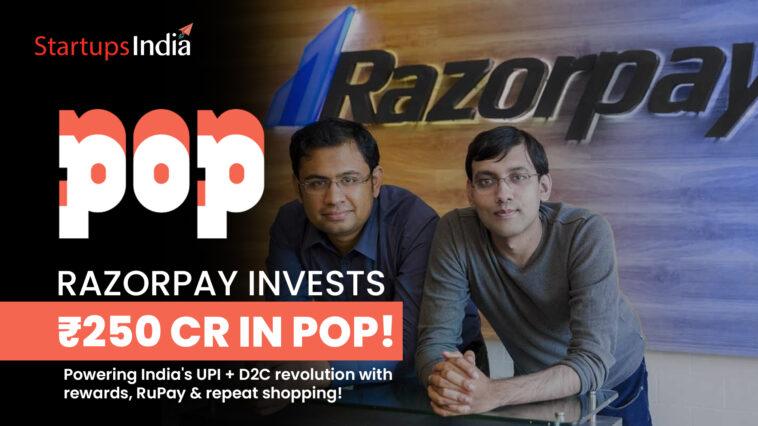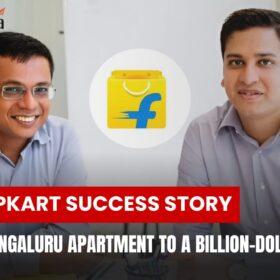In a significant leap beyond its traditional B2B fintech stronghold, Razorpay has officially entered the consumer payments space with the launch of POP, a dynamic new platform aiming to revolutionize how Indian consumers pay, earn, and shop. Backed by a robust ₹250 crore investment, Razorpay’s POP blends UPI payments, RuPay cards, and direct-to-consumer (D2C) shopping—integrated seamlessly with an innovative rewards engine.
The move marks Razorpay’s boldest diversification yet and positions it directly into competition with major consumer-focused fintech platforms like PhonePe, Paytm, and Google Pay.
What is POP?
POP is Razorpay’s new consumer-facing payments and commerce platform. It allows users to:
-
Make instant UPI payments
-
Use RuPay credit cards across online and offline channels
-
Earn and redeem “POPcoins”—its proprietary loyalty and rewards currency
-
Shop from a curated network of D2C brands within the POP ecosystem
The idea is simple yet powerful: “Pay. Earn. Shop. Repeat.”
Each transaction via POP earns the user POPcoins, which can be redeemed for discounts, offers, and product purchases from partner brands on the platform.
The Vision Behind the Move
Razorpay’s decision to enter consumer payments stems from a desire to tap into India’s rapidly growing digital retail and UPI ecosystem. With over 300 million UPI users and a thriving D2C market, the opportunity to create a sticky, reward-driven consumer ecosystem is massive.
Speaking about the launch, Harshil Mathur, Co-founder and CEO of Razorpay, said:
“We believe consumer payments are ripe for reinvention. With POP, we’re not just facilitating transactions—we’re building a habit. A habit that rewards, delights, and simplifies everyday commerce for millions of Indians.”
This is Razorpay’s first major product aimed at consumers, departing from its core B2B focus where it powers payments for over 10 million businesses, including Ola, Swiggy, Meesho, and IRCTC.
POPcoins: Razorpay’s Take on Reward-Led Engagement
At the heart of POP lies the POPcoins reward mechanism. Unlike traditional cashback, POPcoins are designed to be a cross-platform loyalty currency that works with an ecosystem of D2C brands and services.
Users can:
-
Accumulate POPcoins with every UPI or card transaction
-
Use them for discounts across POP’s D2C marketplace
-
Redeem POPcoins for exclusive offers and experiences
By merging everyday payments with brand-driven incentives, Razorpay is betting big on consumer stickiness and cross-sell opportunities.
Why This Matters: Market Implications
-
Fintech-to-Consumer Shift:
Razorpay’s entry into consumer payments represents a strategic shift in India’s fintech landscape. While companies like PhonePe and Paytm began with consumers and moved into merchant services, Razorpay is now moving in the opposite direction. -
D2C Synergy:
The integration of D2C brands within POP opens up a unique space where commerce and payments merge. As D2C startups seek cost-effective customer acquisition channels, POP offers them a ready audience incentivized by rewards. -
RuPay Boost:
The use of RuPay credit cards—encouraged by recent RBI guidelines on credit card-UPI linking—positions POP to ride the wave of RuPay adoption, giving it a local edge. -
New Revenue Streams for Razorpay:
While Razorpay’s core business has been SaaS-based payments processing, POP introduces a B2C monetization model: affiliate fees, advertising, and partner commissions from D2C merchants.
Targeting the Youth and Aspirational Bharat
POP’s branding, gamified reward structure, and focus on D2C brands suggest it’s squarely targeting:
-
Gen Z and young millennials
-
First-time UPI users in Tier 2/3 cities
-
Digital shoppers looking for value-driven experiences
With India’s average UPI user base expanding and rural smartphone usage booming, POP could become a gateway platform for onboarding millions of new digital consumers.
Challenges Ahead
While the POP launch is ambitious, Razorpay will need to overcome significant hurdles:
-
Consumer mindshare: Competing with entrenched giants like PhonePe and Google Pay won’t be easy. Razorpay must differentiate through rewards, design, and partnerships.
-
Merchant ecosystem building: Success depends on how fast and effectively POP onboards quality D2C brands and ensures frictionless redemption of POPcoins.
-
Regulatory scrutiny: With rising attention on fintech innovations, Razorpay will have to ensure POP’s reward mechanisms comply with RBI’s evolving digital payment norms.
What’s Next?
The POP app is currently in beta and available to select users, with a full rollout expected in the coming quarters. Razorpay is also reportedly in talks with over 100 D2C brands to expand the shopping ecosystem within POP.
StartupsIndia will continue to follow this development closely as it evolves, given the potential ripple effects it could create in the consumer-tech, payments, and e-commerce space.
Final Thoughts
Razorpay’s POP isn’t just another UPI app—it’s a signal of how digital payments, commerce, and loyalty are converging in India’s fintech 3.0 wave. If executed well, POP could redefine the user journey from “just paying” to “paying with a purpose.”
For startups, D2C brands, and digital India at large, POP might just be the next big disruptor.





GIPHY App Key not set. Please check settings